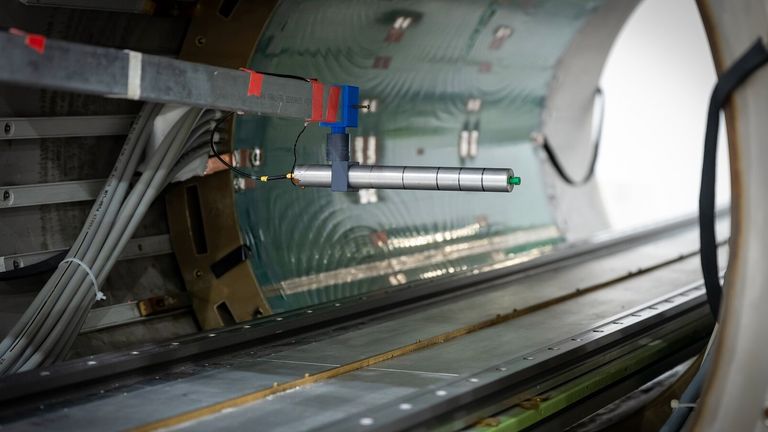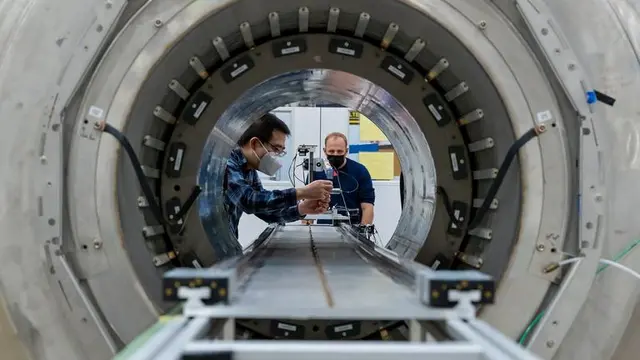A scientific experiment has produced evidence researchers believe points to a previously undiscovered fundamental force of physics.
All interactions in the natural universe - from a hand catching a ball falling from the sky, to magnetism and radioactive decay - are based on four fundamental forces.
Physicists largely understand how these four forces - gravity, electromagnetism, the strong nuclear force (which holds matter together), and the weak nuclear force (which causes matter to fall apart) - are going to interact in any given situation.
But a recent experiment at the high-tech Argonne National Laboratory just outside of Chicago has provided "strong evidence" that there may be a fifth fundamental force, or a previously undiscovered subatomic particle, that science knows nothing about.

Image:A new fundamental force may have been discovered. Pic: Mark Lopez, Argonne National Laboratory
The research was funded by the US Department of Energy which runs the Argonne National Laboratory and the Fermi National Accelerator Laboratory in the US, alongside collaborators from 46 other institutions across seven countries.
The experiment, known as Muon g-2 (pronounced Muon g minus 2), is the latest investigating the very limits of humanity's knowledge about the elementary particles that make up the universe.
It examined a muon - a type of unstable elementary particle similar to the electron - and in particular the muon's g-factor, a value describing how the particle behaves in a magnetic field.
According to the Standard Model of physics, the muon's g-factor is meant to be two. The experiments are designed to examine how much the g-factor actually deviates from two, thus the name Muon g-2.
A discrepancy between the predicted g-factor and the actual observed one was first discovered in 2006, at the Brookhaven National Laboratory in New York.
The Standard Model says that muons are electrically charged, just like electrons, so they would be expected to spin when placed in a magnetic field.
Scientists can observe that spin because of something called precession, which causes the axis of the spinning particle to wobble, meaning humans can observe something called a wiggle plot.
Now new research has confirmed that the wiggle plot for the muon is much larger than predicted by the Standard Model, and the scientists believe the chance this deviation is the result of a measuring mistake to be about 1 in 40,000.
"This is an incredibly exciting result," said the Argonne's National Laboratory's Dr Ran Hong, a postdoctoral appointee who worked on the experiment for over four years.
"These findings could have major implications for future particle physics experiments and could lead to a stronger grasp on how the universe works," Dr Hong added.
"This new physics could help explain long-standing scientific mysteries, and the new insight adds to a storehouse of information that scientists can tap into when modelling our universe and developing new technologies," said the Argonne laboratory.
 简体中文
简体中文






